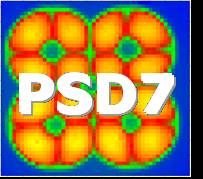Speaker
Mr
Alireza Sadrmomtaz
(University of Birmingham)
Description
Over the last 20 years, positron emission tomography (PET) has
developed as the most powerful functional imaging modality in
medicine. Over the same period, the University of Birmingham
Positron Imaging Centre has developed the use of positron emitting
tracers to study flow in engineering systems. Much of this work has
used the technique of positron emission particle tracking (PEPT)
which was developed at Birmingham. In PEPT, a single radioactively-
labelled tracer particle is tracked by detecting simultaneously the
pairs of back-to-back photons arising from positron/electron
annihilation.
Since 1999 this work has used an ADAC Forte “positron camera”
consisting of two planar gamma camera heads, each containing a
crystal of sodium iodide 5040 cm2 and 16mm thick, operated in
coincidence. This system can record up to 100k events per second,
allowing a tracer particle to be located to within approximately 1mm
1000 times per second. This camera has been used to study a wide
range of engineering processes, by means of PEPT, tracking tracer
particles down to 100µm diameter.
Medical PET scanners consisting of rings of hundreds of small
bismuth germanate detectors have high sensitivity and can operate at
high count rate. We have adapted such a scanner for PEPT use. The
Ecat931 scanner was previously operated at Hammersmith Hospital
until 2002, and comprises 32 detector modules (“buckets”), each
consisting of 128 detection elements. The buckets have been
remounted on a rectangular frame and the data acquisition system has
been modified to record fully-3D data in list mode for subsequent
processing by the PEPT algorithm.
This paper presents initial results from this system. Count rates
of over 250k events per second have been achieved, but the
sensitivity varies significantly within the field of view. Fast
moving tracer particles can be accurately located every 0.8ms.
This system has a flexible geometry which can be optimised to suit
the object being studied. Another advantage of this system is that
it is in principle transportable. In the near future we plan to use
it to perform PEPT studies on an industrial site.
Primary author
Mr
Alireza Sadrmomtaz
(University of Birmingham)




